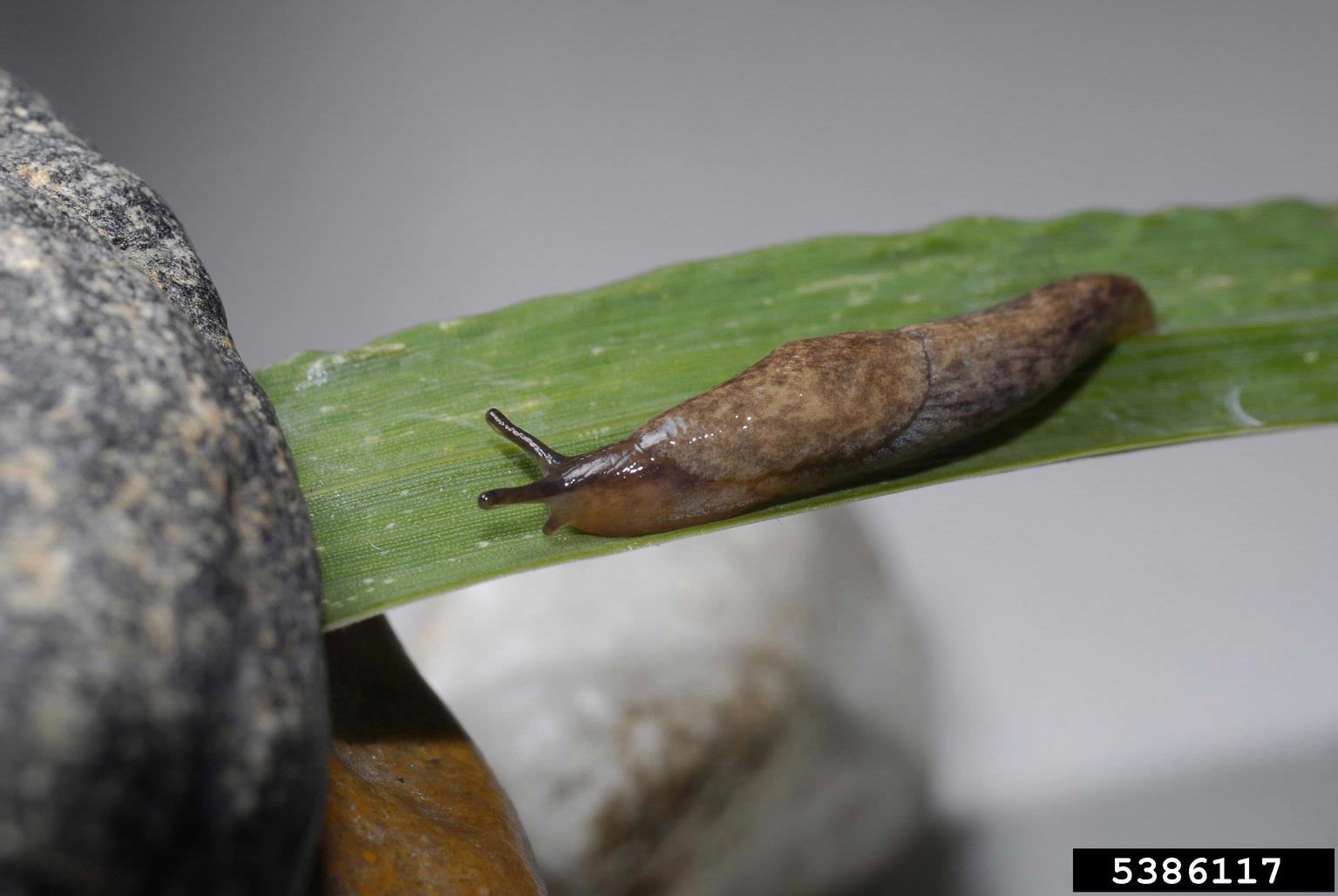There are three common types of slugs in Maryland: gray garden slug (Deroceras reticulatum), tawny garden slug (Limax flavus), and spotted garden slug (Limax maximus). You might also find brown garden snails (Helix aspersa).
Appearance
- Eggs: BB-sized, white, opalescent, and gelatinous, typically in clusters of about 25.
- Adults: 1.5-5" long, slimy, fleshy body that tapers at both ends; colors range from black or brown or gray to yellowish or creamy; may be uniform in color, striped, spotted, or mottled, depending on species; extended eyestalks; do not have a shell ("naked snails").

Life cycle/habits
- May overwinter in all stages in soil. Prefer cool, wet environments, and are active primarily at night or on heavily overcast days.
- Seek shelter during the day under debris or objects, where it is cool and moist. Less active in hot, dry weather.
- Although hermaphroditic (both male and female organs occur on each slug), they must cross-fertilize. Up to 200 eggs are laid, usually in small clusters, about 1" deep in damp, loose soil or debris, during the wetter months of spring and fall.
- Hatch occurs in 30 days when soil is damp enough; development is suspended if weather gets too hot and dry. Adult size is reached in 3-12 months. Lifespan is up to several years.
Host plants
- Soft-leaved herbaceous plants, especially asparagus, leafy crops (i.e., beets, cabbage, Swiss chard, lettuce, spinach), and solanaceous plants such as eggplant, pepper, potato, or tomato. Will feed on strawberries, especially seedlings.
Signs/symptoms
- Slugs feed on every part of host plants. They can consume entire small seedlings as well as tender stems, and chew ragged, small to large holes primarily in leaf interiors, instead of along the edge.
- Slugs also damage emerging asparagus spears and make holes or rasped patches on fruit of solanaceous plants, such as tomatoes and peppers.
- Slugs typically leave silvery slime trails wherever they are active.
Monitoring
- Watch for slime trails on leaves, stems, soil or any other surface.
- Look for leaves with ragged holes primarily in the leaf body, not along edges.
- Scout for adults at night. Turned soil may reveal eggs.
- Place shelters such as folded, moistened newspapers or boards in the garden for slugs to gather under; check beneath the shelter for the presence of slugs.
Prevention/control
- Slugs avoid dry or jagged surfaces, so create borders of gravel or sand around plants.
- Encourage good air circulation; expose the area to sun.
- Evergreen groundcovers, mulch, and watering systems can encourage slugs.
- Sanitation is important: remove low-growing weeds, debris, rocks, and any other object slugs may hide beneath.
- Use row cover to protect seedlings.
- Encourage predators: toads, birds, turtles, predaceous beetles.
- Handpick slugs at night or attract to traps.
- Slug baits containing iron phosphate or ferric sodium EDTA may be used in home food gardens. These bait options are considered "less toxic" to pets. As with any pesticide use, read and follow all product label instructions.
